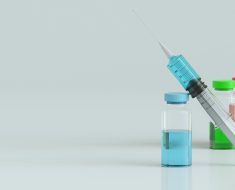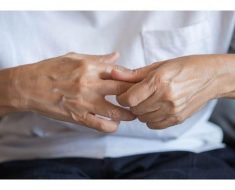High temperatures can reduce the efficacy and safety of drug therapy. Alina Hermann, MD, and her team from Heidelberg University Hospital in Germany explain how heat can affect the quality of pharmacotherapy, and they clarify where special attention is required.
Equipment Malfunction
Heat can affect pharmacotherapy by causing physical damage to medicinal products. The potential consequences of this were described in The BMJ a few years ago. An 11-year-old girl with type 1 diabetes developed diabetic ketoacidosis after her insulin pump stopped functioning correctly because of severe heat and solar radiation.
As Hermann and her colleagues report, the summary of product characteristics and the package leaflet for approved medicinal products contain information regarding the storage conditions under which the drug should be stored. For drugs for which no particular storage conditions are noted, the drug has been tested at a storage temprature of 40° C with 75% humidity. If a temperature limit is specified, the stability of the drug has been demonstrated through long-term testing up to the specified value.
This does not necessarily mean that the drug loses stability at higher temperatures and that exceeding these limits for a short time will result in a loss of quality. There are many solid oral forms of drugs that are stable for more than 2 years in tropical climates, Thomas E. A. H. Küpper, MD, PhD, a researcher at Aachen University in Germany, and his team describe in an overview.
Neuroleptic Malignant Syndrome
According to the Heidelberg authors, for patients, heat stress can lead to decompensation of existing diseases (for example, heart failure) or can lead to adverse drug reactions (for example, neuroleptic malignant syndrome in patients with Parkinson’s disease). Limitations on organ function due to inadequate hydration can reduce the extent to which drug substances are excreted and thus make a dose reduction necessary. In this way, kidney dysfunction is one of the most common causes of hospitalization during heat waves. A creatinine measurement to estimate kidney function is important and may necessitate a drug dose adjustment to the amended clearance ratio.
Hermann and her colleagues write that any diuretic dose should be considered critically in such situations, since diuretics can promote dehydration; treatment with diuretics is one of the most important risk factors for heatstroke-associated deaths.
According to Hermann and her colleagues, attention should be paid to the fact that drug substances can interfere with various protective mechanisms that the body uses in reaction to an increase in body temperature. These mechanisms include the following:
-
Thirst: ACE inhibitors and sartans were associated with a reduced sensation of thirst, but their impact is disputed.
-
Central temperature regulation: According to the Heidelberg authors, the mechanism by which central temperature is regulated is still not completely clear, but it seems to be dependent on monoamines and is therefore negatively influenced by neurologic and psychiatric diseases, as well as psychotropic drugs (eg, opioids, serotonin reuptake inhibitors, carbamazepine, anticholinergics, and tricyclic antidepressants).
-
Sweating: Hypohidrosis can be triggered by muscarinic antagonists, such as anticholinergics, tricyclic antidepressants, H1 antagonists that act on the central nervous system, or antipsychotics.
-
Cutaneous vasodilation: Sympathomimetic drugs can affect regulation of the skin’s blood supply through cutaneous vasoconstriction.
Lots of psychotropic substances, particularly anticholinergic substances or those that have a sedative effect, entail high risk. If therapy with these substances cannot be avoided, their dosages should at least be set as low as possible.
Effect on Pharmacokinetics
Heat can affect pharmacokinetics via various mechanisms, and as a result, it can also affect a patient’s exposure to the active substance. Warmth and a strong rise in cutaneous blood flow can increase the systemic availability of transdermally or subcutaneously administered drug substances (eg, opioid patches).
Furthermore, significant circulatory changes under extreme heat can reduce renal and hepatic perfusion by as much as one third. Hepatic perfusion affects the bioavailability of orally administered substances with a high hepatic extraction rate (that is, substances with a high first-pass effect), such as tricyclic antidepressants or beta blockers. In this way, the plasma concentration of propranolol, for example, increases by 67% in extreme heat and is associated with stronger pulse retardation.
At-risk patients should be monitored especially carefully during heat waves, the authors advise. The aims are to recognize excretion disorders and to discontinue or pause critical medicinal products in a timely manner where necessary or to reduce the dose. The active substances in question include in particular those that significantly interfere with temperature and circulation regulation (eg, first-line diuretics, anticholinergic substances) or that can restrict vigilance and thereby restrict the patient’s self-care (eg, sedatives, opioids).
The Heidelberg University clinical pharmacologists have provided information on the correct, safe use of medicinal products during heat waves. Their website features regularly updated tables that summarize the substance classes, the expected risks, and potential measures to minimize these risks.
This article was translated from Univadis Germany.
Source: Read Full Article





